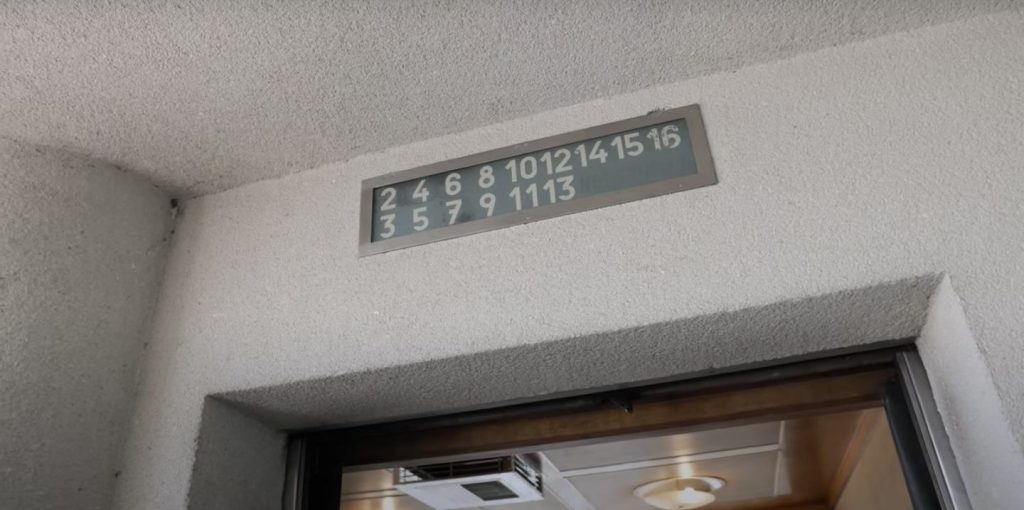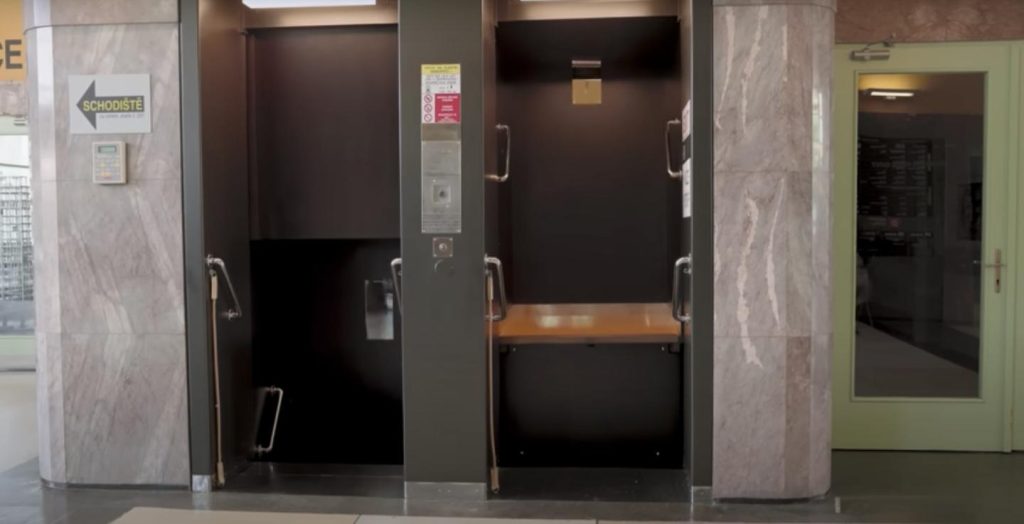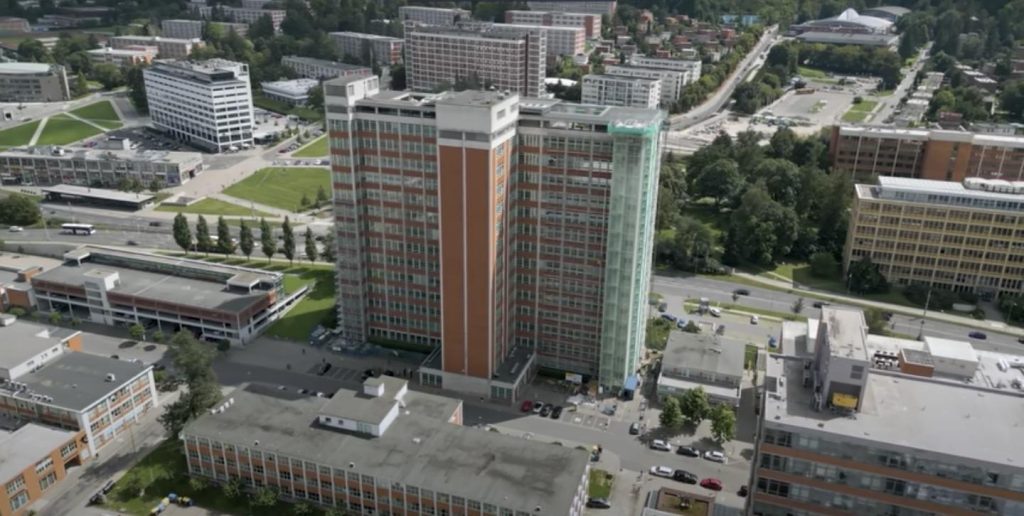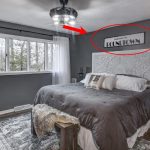Imagine working for a company where instead of the boss asking you to come to their office, the office comes to you. Well, that’s exactly what this visionary Jan Bata did. If you step into his retro elevator in Zlin, you’ll quickly realize that it’s no normal lift. That’s because Jan Bata, the famous Czech industrialist, transformed it into his own personal office space. Yes, you read that correctly – this guy’s workspace was literally a vintage elevator cab!

The year was 1939, and Bata was leading his thriving Bata Shoe Company. As his empire grew, so did the paperwork. Bata needed more room to spread out documents and materials, so he looked right beside him. An unused Art Deco elevator in his new Zlín headquarters seemed like the perfect blank canvas.
How Did He Even Get An Elevating Office In The First Place
His mobile office was built by Otis, an American manufacturer who owned the Otis Elevator Company. This ingenious elevator made in the early 1930s measured a whooping 5m by 5m. The Otis Company had previously built bigger elevators than that, so for them, this was not as complicated as we would imagine most tasks in the 1930s were. The elevator has light furnishing, which helps regulate the weight, and it uses simple methods to keep these features in check.

It even has standard buttons, and comes with a sleek desk and multiple shelves. Wood panels and stylish lighting give it a contemporary flair. Riding between floors, Bata could efficiently check on various departments. It was the ultimate alternative to stale boardrooms for this unconventional businessman.
It Even Has A Sink!
And so what? You might ask. The sink in Jan Antonin’s office wasn’t just a regular drain, it had hot and cold running water. In a moving elevator! You might think that there’s probably a sink installed on every floor, and it would just line up. But no, the sink actually moves with the elevator. Well, maybe there is a genius plumbing process going on similar to the way a rotating house works. Also no. How it works is pretty simple.

There is a water tank above the elevator office and a wastewater tank below it. As often as possible, maintenance fills the water tanks above and empties them below. Sounds really simple, yet genius. As we all know, sometimes, the simplest solutions turn out to be the best. These days, however, as expected, the tanks are always kept dry.
Rumor Has It
There’s this rumor that Jan Bata would use his elevator to keep watch on his employees by staring out the door of his elevator at any time just to give them a jump scare. As intriguing as this story might sound, he wasn’t an evil boss and this story seems very unlikely. Each floor of the Baťa Skyscraper is 80 meters by 20 meters, and his elevator is a corner office with narrow doors.

This sight range is not wide, which makes it impossible to monitor the employees spread across the floor. Besides, there was a control, and a big light-up indicator outside the elevator that alerted his employees before his arrival on each floor. Meaning? They could never be caught unaware. We’re not sure if the employees pushed the control button at some point to call the office to their floor as a prank but if they did, it would have been funny.
Other Intriguing features Of The Jan Bata Skyscraper
Another real marvel was the kinetic “paternoster” elevator itself. A series of open compartments looped continuously, shuffling passengers upwards like a mechanical ballet. For Bata’s employees, it was transportation and a time machine in one. Throughout the building, this interplay between past and present becomes tangibly apparent. Yes, the smooth elevators still glide upward, almost like apparitions from the past. But their efficient purpose powerfully speaks to later eras of automation and technological promise.

That the Jan Bata Skyscraper can blend these notes of heritage and innovation shows the visionary nature of its construction eight decades ago. It highlights a journey from Zlín’s emergence as an industrial powerhouse through ambitious modernist dreams of what the city could become. Moving through its spaces, one physically inhabits that sense of unbroken progress. Gliding through the past while moving into the future, riders felt an impossible connection to two eras at once.
The Jan Bata Skyscraper’s Essence Of Contemporary Innovation
The Paternoster embodied the bold innovation around them in the stunning new Bata Skyscraper. Rising above Zlín like a watchtower, this modernist tower was an embodiment of Bata’s progressive outlook.

Sleek, stripped of ornament, and formed from smooth concrete, the Skyscraper exemplified cutting-edge style. Its sheer vertical lines and immense height symbolized the promise of technological progress. Inside, the sun-splashed through huge windows into vast open spaces. The whole interior blended heritage with contemporary innovation, embodying an unbroken spirit of optimism.
A Place of Dreams
So while quirky, Bata’s elevator office perfectly reflected this surrounding culture of boundary-pushing design. What better place to dream up visionary ideas than an office moving through the future itself?

For Bata, even the wildest ideas sparked genius. Though compact, his kinetic workspace helped his productivity skyrocket. Zooming through a retro world, he was conceptualizing innovations that would carry his company upward for generations. An Enduring Architectural Masterpiece
Now To The Truth
There are speculations as to why Jan built his office in an elevator. Some say it was for privacy, and others believe it was for efficiency. It was probably a long walk to get to the main elevator, and it wasn’t appropriate for the boss to share one with other employees. The truth? We’ll never truly know. Jan Antonin Baťa never got to use the elevator office because it was completed in 1939. At that time, Europe was already at war, and he had left the continent with his family.





